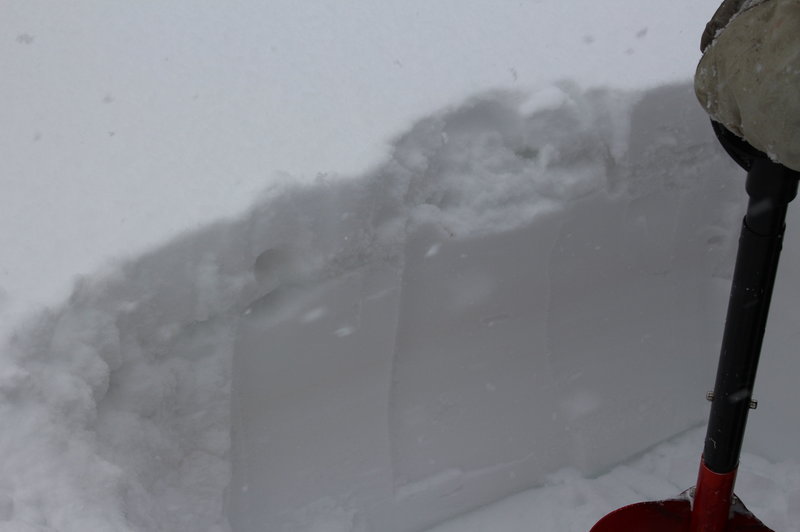
For most of the winter, it stays hidden, buried under blankets of snow. Then, the days grow longer. The sun’s rays begin to melt the top layers, causing water to percolate through the snow and ice or evaporate, revealing; dust. How can something so simple undermine our water infrastructure, stress wildlife and lengthen the wildfire season all at once?
Snowpack in the Colorado River watershed is already at record lows as we move into the longer and drier days of summer. Water managers and fire forecasters are sounding the alarm about less water flowing in streams and reservoirs. Dust adds one more layer of complexity to an already precarious year.
To see it you need to dig a pit. In the spring, that’s usually where you’ll find Jeff Derry, waist deep in a snow pit somewhere in the southern Rocky Mountains. His job as the director of the Center for Snow and Avalanche Studies in Silverton, Colorado, forces him to pay close attention to the amount of dust that winds up embedded in snow.

Think of it like the rings of a tree. If you dig deep enough, you see the entire winter’s story, made up of layers of snow, reminders of each storm that’s built the snowpack. But when Derry digs pits it’s not just so he can get nostalgic for snowstorms of yore. He’s on a fact-finding mission.
“I’ll be curious if you’re going to be able to see the dust event we had February 18 and 19,” Derry says as he shovels snow over the edge of the pit. “Because it is very subtle.”
The dust, just by showing up, can speed up spring runoff, causing streams to peak weeks earlier and make melting more intense and erratic.
“It melts the snow faster than it would have otherwise,” Derry says. “And then it melts down to the next dust layer, and so on and so forth until all the dust layers have combined at the surface of the snowpack greatly reducing the albedo.”
Not only does this make managing water harder, it can also upset mountain ecosystems, causing earlier green-up of vegetation. If snow melts earlier that gives wildfires more opportunity to spark and take hold.
Most of the dust that’s settling in places like the San Juan mountains comes from the desert southwest – from land disturbances like farming, oil and gas drilling, cattle grazing, recreation and residential development on the southern end of the Colorado Plateau.
“It’s kind of a slow crisis, a slow disaster,” says Rich Reynolds, an emeritus researcher with the U.S. Geological Survey in Denver. “It’s not like a hurricane. It’s not like an earthquake or a volcano.”
In a 2010 study researcher Thomas Painter and his colleagues found that in heavy dust years the Colorado River’s flow on average peaked three weeks earlier than in years without heavy dust deposition. The group also found that earlier melt off lessens the amount of water that runs to the Colorado River by about five percent. That’s more water lost than the entire state of Nevada uses from the river in a year.
And then there’s climate change. University of Utah hydrologist McKenzie Skiles recently co-authored a study that looked at which is the greater threat to snowpack: warmer temperatures or dust.
“What we found looking at those two in this region, is that it was actually dust that controlled snowmelt timing and magnitude and sort of how fast snow ran out of the mountains, as opposed to temperature. We didn’t see any relationship to the temperature at all,” Skiles says.
Warming temperatures are more likely to affect and diminish total snow accumulation, causing some snow to come down as rain. But when it comes to runoff, dust is the controlling factor. It’s the sun’s rays that force snow to melt, not outside air temperature.
For Luke Runyon’s full, fascinating article, head over to KUNC.org and check it out.